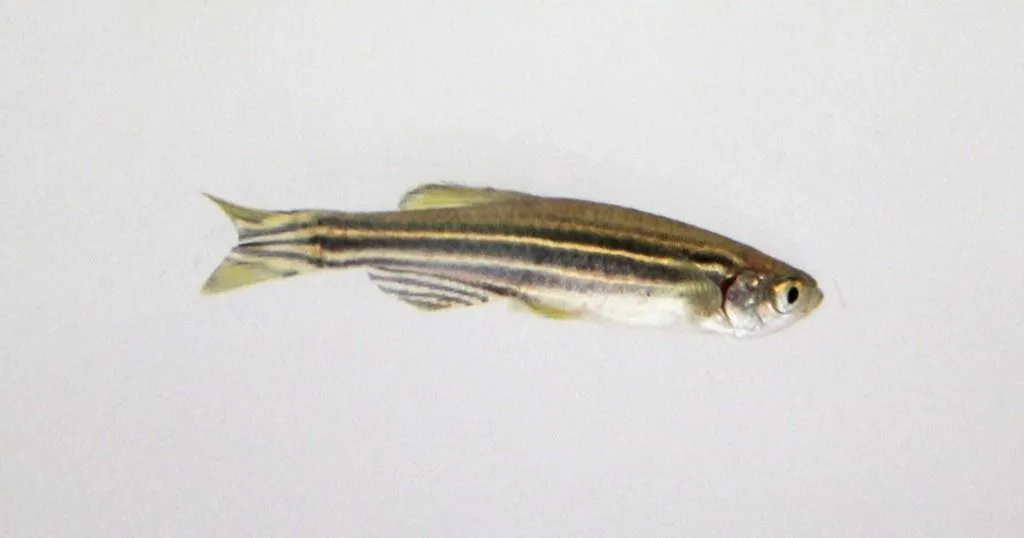Knockout of Down syndrome gene in zebrafish leads to autistic-like behaviors
Knockout of Down syndrome gene in zebrafish leads to autistic-like behaviors: Though earlier knockout models in mice failed, researchers have developed a successful zebrafish model.
Posted by
Published on
Tue 09 Jan. 2018
Topics
| Autism | DanioVision | EthoVision XT | Social Behavior Research | Video Tracking | Zebrafish | Developmental Disorder |

Autism Spectrum Disorder (ASD) is not a clear-cut disease, but rather a genetically heterogeneous group of neurodevelopmental disorders. This makes it hard to point to one specific cause, for example, one gene linked to autism. However, recent studies suggest that abnormal functioning of the DYRK1A gene might play a causal role in autism.
Down syndrome gene
The DYRK1A gene is mostly known within the context of Down syndrome. It is located on chromosome 21, at the critical region for Down syndrome. Overexpression of this gene is linked to intellectual disability and microcephaly.
Researchers now suspect that underexpression of this gene is linked to autism. However, while overexpression and consequent clinical symptoms is replicable in murine models, underexpression is hard to investigate in mice due to the high mortality rate in knockout models.
New zebrafish model
After finding an individual with an intragenic microdeletion of DYRK1A and microcephaly and autism, Kim et al. (2017) wanted to know more about the influence of this gene on autism. They recently published a paper in Molecular Autism proposing a new zebrafish to investigate the role of this gene.
Contrary to mice, knocking out the analogue for this gene (dyrk1aa) did not cause lethality in zebrafish. It did lead to reduced brain size and impaired social behavior, indicating that underexpression of DYRK1A can indeed cause autism-like symptoms.

Behavioral investigation
This study involved a rather comprehensive list of behavioral tests. For starters, early larval zebrafish were exposed to a dark flash test as well as sleep and waking measurements. Furthermore, adult zebrafish were exposed to a novel tank assay, social interaction assay, and shoaling bowl assay.
DanioVision testing
Larvae were placed in 24-well plates in a DanioVision Observation Chamber and exposed to dark flash pulses to induce a startle response. This response was assessed by measuring the distance moved per 10 second time bins with EthoVision XT video tracking.
Sleep and waking behavior was measured by analyzing locomotor activity (velocity in 30 second time bins) during night and day phases over the course of two days.
Both tests revealed no differences between wild type zebrafish (WT) and the dyrk1aa knockouts (KO).
Tracking of adult fish
To analyze anxiolytic behavior, adult fish were individually placed in a novel tank. The location of the fish in the tank (bottom, middle or top part) was recorded during a span of 10 minutes. Interestingly, knockout fish showed less bottom dwelling, indicating less anxiety in these fish.
Social interaction
To investigate social behavior, which is a hallmark to autism, two social tests were performed.
In a social interaction test, fish were placed in a two-chambered tank. Social stimuli fish were placed in a smaller part of the tank, and the test subject fish were placed in the larger part. The location of the fish (near, second near, or in the third or fourth zone away from the stimuli fish) was measured during a span of 15 minutes
Where WT fish spent most of their time right next to the stimuli fish as expected, the KO fish spent their time swimming all over the tank, not showing specific interest in the other fish.
Shoaling
Shoaling was measured as inter-fish distances in groups of three to seven fish in a round, flat-bottomed bowl. Again, KO fish did not show specific social interest, indicated by their lack of social cohesion, whereas the WT fish were shoaling as expected. The authors supplemented these experiments with one in a rectangular tank, confirming earlier findings.
References
Kim, O.-H.; Cho, H.-J.; Han, E.; Hong, T.I.; Ariyasiri, K.; Choi, J.H.; Hwang, K.-S.; Jeong, Y.-M.; Yang, S.-Y.; Yu, K.; Park, D.-S.; Oh, H.-W.; Davis, E.E.; Schwartz, C.E.; Lee, J.-S.; Kim, H.-G.; Kim, C.-H. (2017). Zebrafish knockout of Down syndrome gene, DYRK1A, shows social impairments relevant to autism. Molecular Autism, 8, 50.
Related Posts

Zebrafish help us to understand neurodegenerative and neuromuscular diseases
Studying zebrafish behavior using video tracking software

